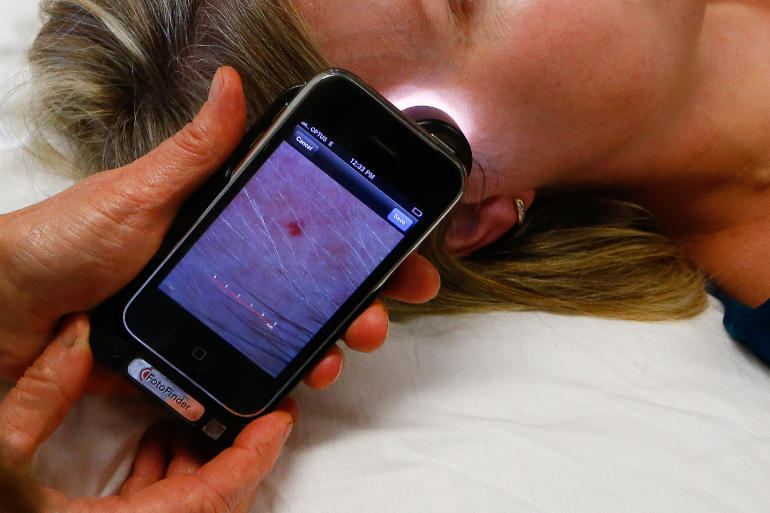
“Phoning it in” is not always the answer for skin cancer detection
21 February 2020
Australians’ awareness of skin cancer using naked eye examinations is an effective way to detect suspicious moles and spots.
A new study from the University of Queensland compared people using naked eye self-monitoring to mobile teledermoscopy, a mobile phone fitted with a specialised camera, showed that both groups had a high degree of accuracy in detecting the suspicious spots.
These results were initially surprising to Professor Monika Janda, UQ Centre of Health Services Research.
“Although we had hypothesised that new mobile technologies would lead to a better detection rate, our study showed that both groups had overall high level of performance in finding spots and moles that a dermatologist also thought were worthwhile checking”.
Queenslanders have the highest risk in the world for developing melanoma, with one in 16 men and one in 24 women affected.
No population-wide screening program for melanoma currently exists in Australia.
As most skin cancers are first detected by the patient or their family, new methods for improving skin self-examinations at home could lead to further improvement in early detection and reduce the burden of melanoma.
“We hope that one day, with the integration of artificial intelligence, mobile teledermoscopy will be more effective at detecting melanoma and other skin cancers early”. Professor Janda said.
“But as the mobile teledermoscopy group did not find more skin cancers, naked-eye skin self-examination as currently recommended still remains the standard.”
The findings were published today in The Lancet – Digital Health (DOI: 10.1016/S2589-7500(20)30001-7).
Media: Professor Monika Janda, m.janda@uq.edu.au, UQ Dermatology Research Centre Communications, Melissa.kerr@uq.edu.au, +61 3443 7494.




